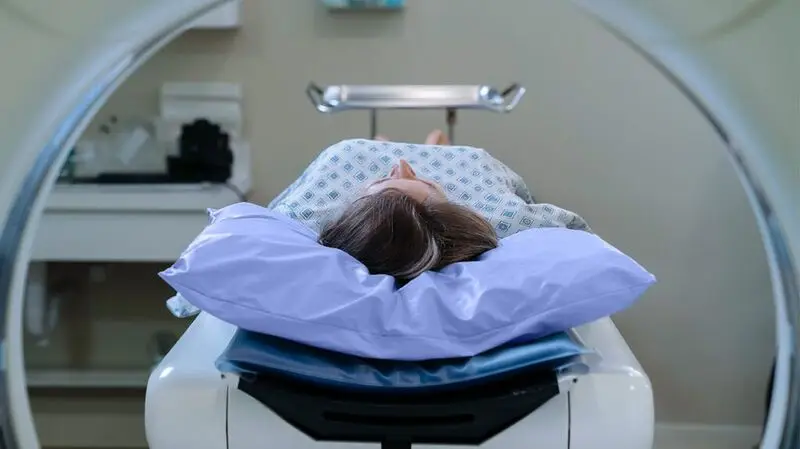
- Mayo Clinic researchers created a model to predict Alzheimer’s-related cognitive decline.
- The tool uses amyloid PET scans and genetic information and predicts both the lifetime and 10-year risks of developing mild cognitive impairment (MCI) and dementia.
- Not only does the tool predict risk, but it can also predict it before symptoms appear.
As people age, their risk of cognitive decline rises. In 2025, about 7 million Americans aged 65 and older have Alzheimer’s disease, and this number is expected to grow.
Mayo Clinic researchers noted that Alzheimer’s begins long before symptoms appear, but said the link between
Using 20 years of data, they developed a tool that predicts 10-year and lifetime risk of cognitive impairment based on brain scans, age, and genetics.
The study is published in
Alzheimer’s disease is progressive, affects cognitive abilities, and is the most common cause of dementia. Early in the disease, “
There is no single cause of Alzheimer’s, but it is thought to be a combination of genetic, environmental, and lifestyle factors.
Some early signs of Alzheimer’s include:
- forgetfulness
- misplacing items
- mood and personality changes
While there is no cure, treatments like Leqembi (lecanemab) can slow progression and improve quality of life.
There are tests that can identify the biomarkers associated with Alzheimer’s, and the researchers in the current study aimed to go further by predicting a person’s lifetime and 10-year risk of developing MCI or dementia.
Researchers followed more than 5,100 adults ages 50 and older from 2004 to 2024, tracking cognitive changes using a model with four stages: cognitively unimpaired, MCI, dementia, and death.
The researchers used brain scans to measure early signs of Alzheimer’s and considered factors such as age, sex, and the APOE4 gene, which is linked to higher Alzheimer’s risk.
The PET scans measured
Using this information, the researchers created a model to predict 10-year and lifetime risk, factoring in age, sex, and APOE4 status.
The data showed a clear link between amyloid buildup and risk: higher levels were connected to both a higher lifetime risk and 10-year absolute risk of MCI and dementia.
The biggest risk factors for Alzheimer’s
For example, a 75-year-old man with APOE4 and normal cognition had a 56% lifetime risk of MCI at low amyloid levels, rising to over 76% at very high levels. Women with the same gene variant had even higher risks.
Age also played a major role, especially in short-term risk. A woman with the APOE4 gene and moderate amyloid buildup had less than a 10% chance of developing MCI within 10 years at age 65, but that risk rose to more than 60% by age 85.
Overall, higher amyloid buildup and advanced age both increase the risk of cognitive decline and dementia, even in people who seem cognitively healthy. These findings could help guide early treatments and prevention strategies.
Lead author of the study and Mayo Clinic Professor of Radiology, Clifford Jack, Jr., MD, spoke with Medical News Today and emphasized that the new Alzheimer’s risk prediction tool is currently for research use only.
He explained that it will not be ready for clinical use “until treatments have received regulatory approval for the population with preclinical Alzheimer’s disease,” meaning people who have biological signs of the disease but no symptoms yet.
Jack also said that since no approved treatments currently exist for this group, biomarker testing should not yet be done in people without symptoms.
“There should be no biomarker testing in that population because biomarker testing would not change patient management,” said Jack.
Allison B. Reiss, MD, Associate Professor of Medicine at NYU Grossman Long Island School of Medicine and Medical Advisory Board member of the Alzheimer’s Foundation of America, shared her thoughts about the study with MNT.
Reiss praised the Mayo Clinic study and called it “very well-designed” and a “rigorous and thorough” effort that adds meaningful knowledge to Alzheimer’s research.
“I want to stress optimism,” said Reiss. “This study and others like it will allow us to find the people who need preventive measures years before they manifest memory and cognitive changes.”
She noted, however, that “the amyloid PET scan is expensive and can be uncomfortable and is not available everywhere.” Reiss also recommended daily exercise, a balanced diet, and quality sleep to protect brain health.
Nicole Avena, PhD, Associate Professor of Neuroscience at Mount Sinai School of Medicine, also weighed in on the study.
“I think this is a major advance in predictive neuroscience and preventive medicine,” said Avena.
Avena noted that by combining genetics, age, sex, and brain scans, the Mayo team created a model that predicts cognitive decline years before symptoms appear. She also emphasized that, presently, the tool is only used in a research capacity, but said it “has real potential to evolve into a clinical decision-support tool.”
Avena made the following recommendations for people to reduce their Alzheimer’s risk:
“Managing blood sugar, getting regular physical activity, and following a Mediterranean or MIND-style diet may reduce risk. Quality sleep, stress management, and staying mentally and socially active are also equally important.”





